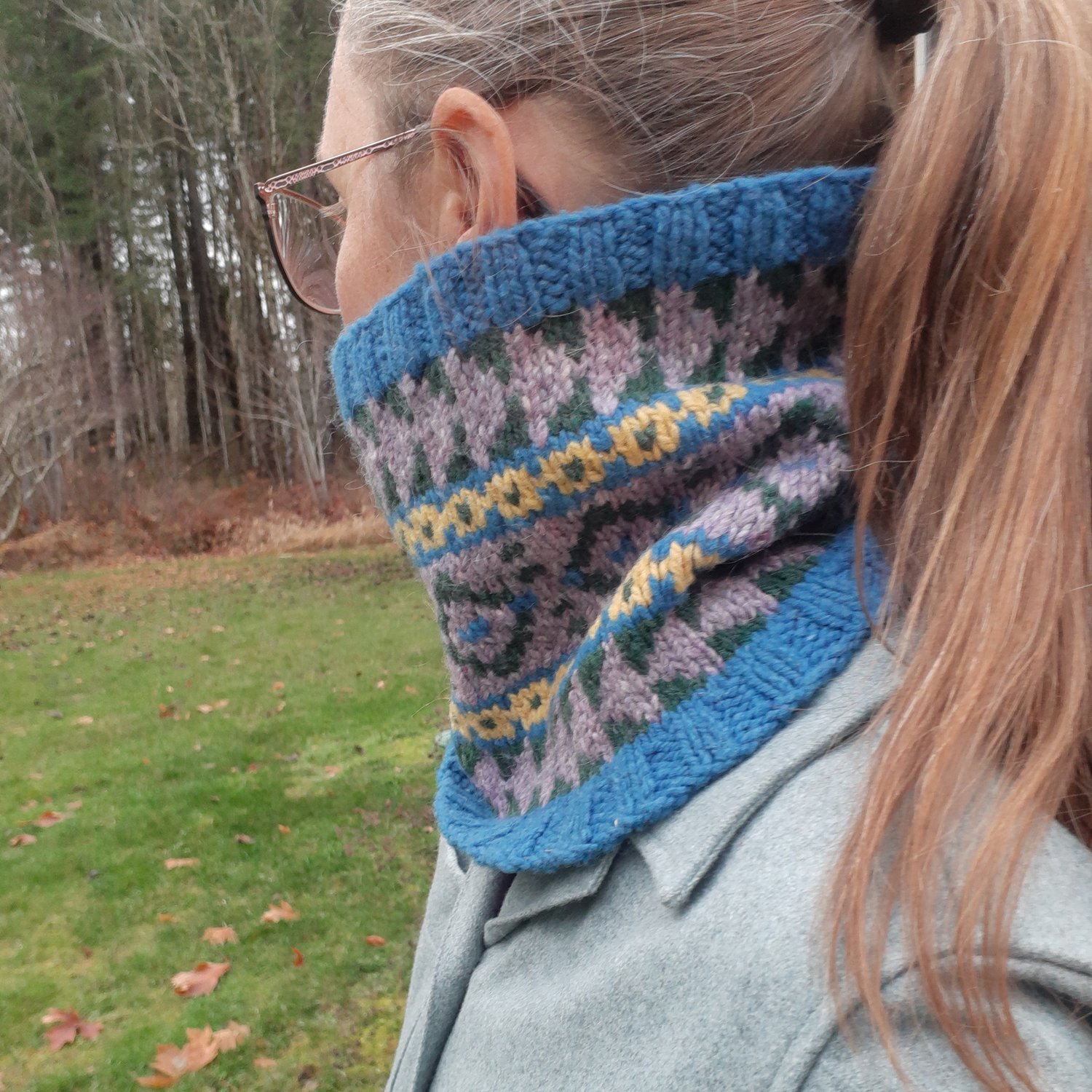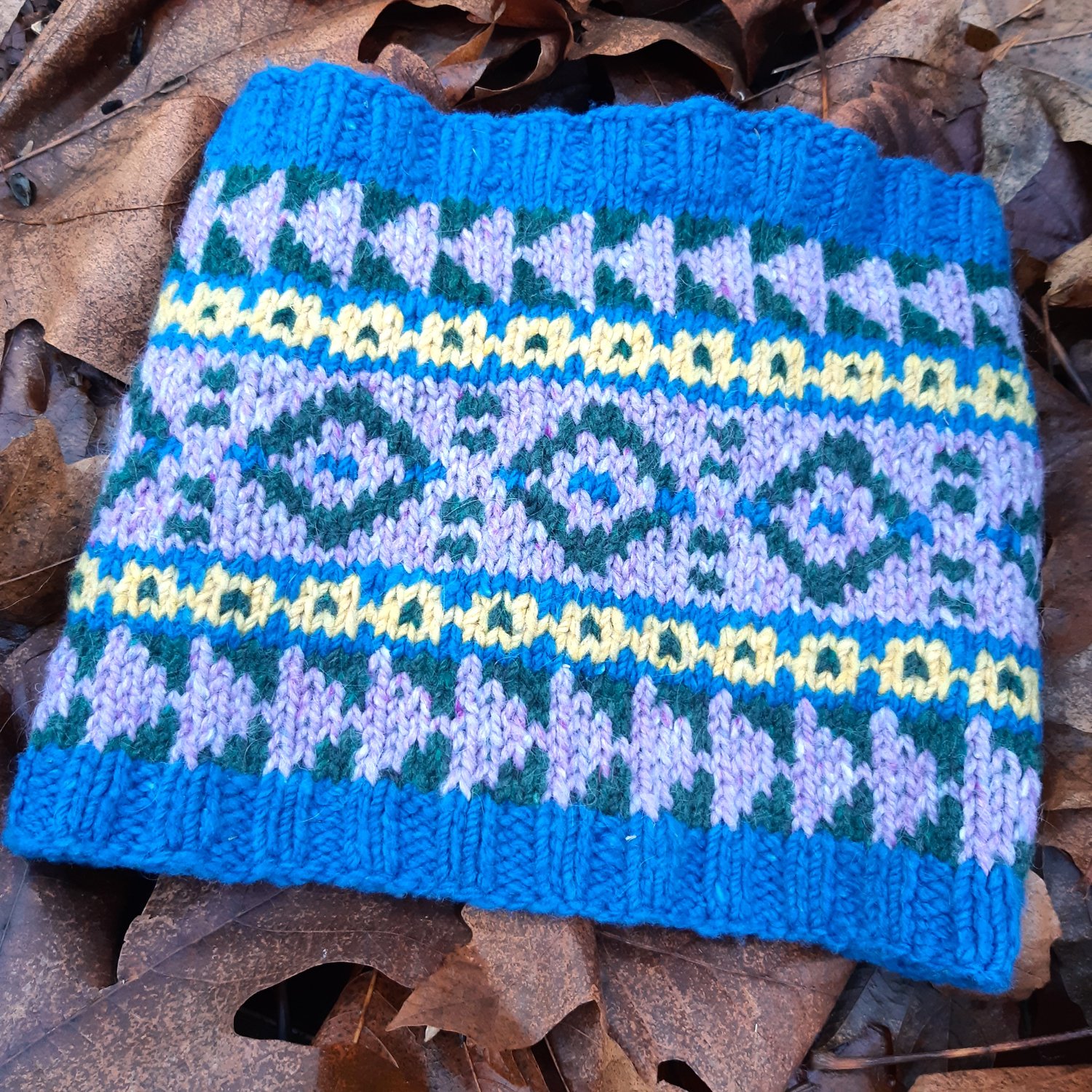Which Way Cowl
Are you looking for a quick, stranded colourwork project? This cowl provides a gentle introduction to stranded knitting, as the motifs are small with (mostly!) short floats. The sturdy yarns provide structure so the cowl stands up protectively around the neck and the thicker yarns make this a quick knit. The stranded fabric is double thick to help keep the wind off your neck and the fitted shape (more of a neck gaiter) helps too.
Yarn:
MC heavy worsted weight yarn, solid or tonal, approx. 60 m
CC1-3 worsted weight yarn, solid, tonal, gradient, or variegated, approx. 120 m total (40m, 60m, 20m if worked according to pattern)
C2 and C3 need to contrast with MC and C1, but don’t need to contrast with each other.
On the last page of the pattern, you’ll find a colouring sheet where you can experiment with your favourite colour combinations.
Suggested yarns:
Custom Woolen Mills Mule Spun 2-Ply [100% Canadian wool, 112g/198m]
Briggs and Little Heritage [100% wool, 113g/196m]
Haynes Creek Heathers Aran [100% wool, 100g/180m]
Peace Fleece Worsted [75% wool/25% mohair, 113g/183m]
The suggested yarn is a non-superwash, plied wool yarn with some rustic character. The contrasting colour yarn will provide the pattern interest – tonal, variegated, or gradient yarns would be great here. The yarns in the sample photo are Custom Woolen Mills (CWM) Mule Spun 2ply (blue, yellow, green) and Peace Fleece worsted (purple).
Gauge
18 stitches and 21 rounds per 10 cm (4”) in stockinette stitch in the round.
Finished Measurements
Laying flat: 23.5 cm (9.25”) tall and 28cm (11”) wide.
Pattern Notes
After a short amount of ribbing, the rest of the cowl is worked in stranded stockinette stitch, followed by ribbing to complete the cowl. The colourwork sections have at most two colours at one time. You can carry the unused colours up as you work, catching them every few rounds, so that you have fewer ends to weave in. Skills needed: cast on, knit stitch, purl stitch, bind off. When floats are longer than 4 stitches, I recommend you catch the floats using some form of float management (twist the two working yarns around each other).




